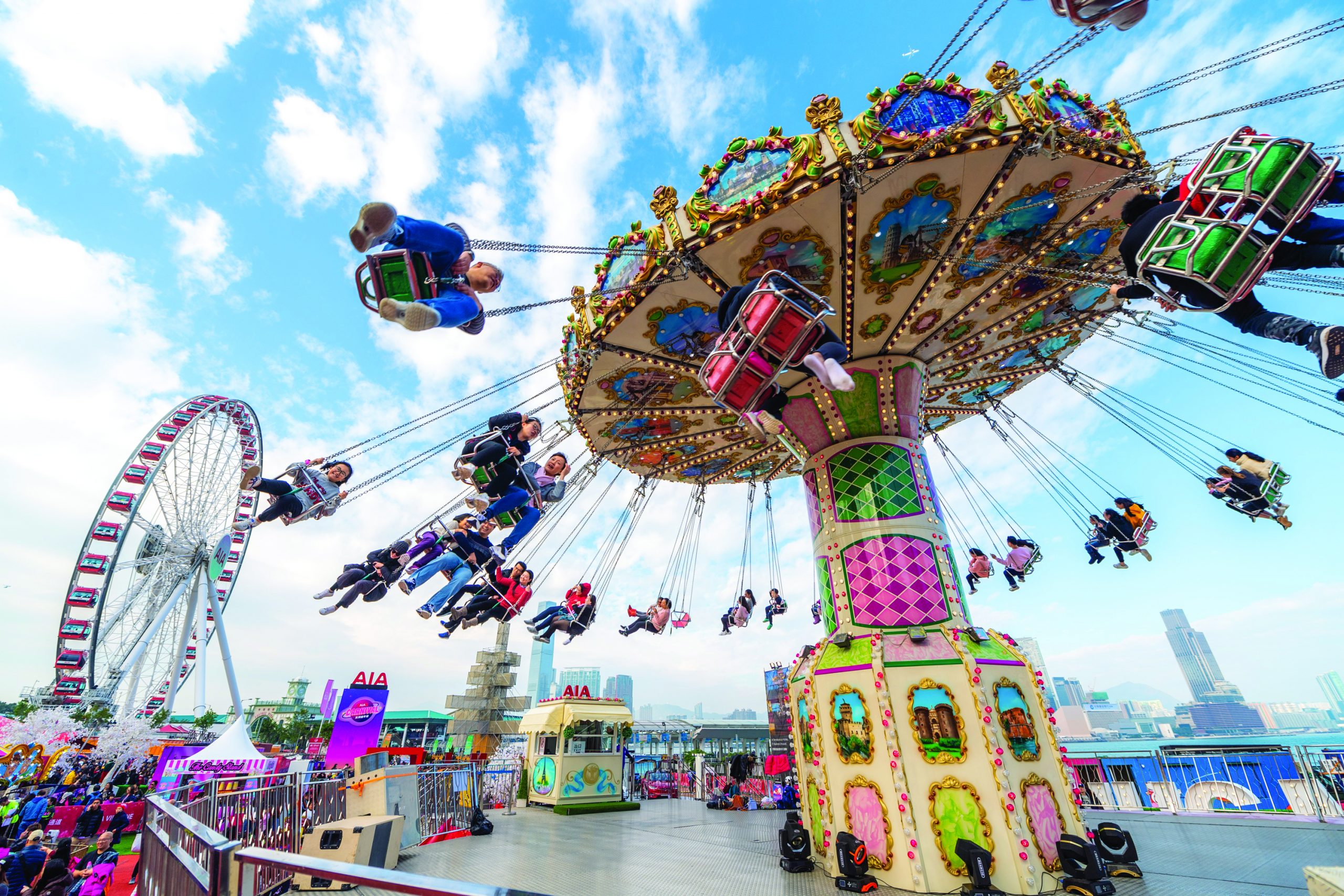Man has depended on river systems throughout history. Wherever water gathers in the mountains and propels itself towards the sea, people have traditionally made use of it for drinking, washing, irrigating crops and transportation… and in the modern world, rivers are now often used for leisure purposes as well. Asia is home to some of the world’s greatest – and most rewarding – rivers, and event planners are tapping into the riverine opportunities they present, as the following five examples illustrate.
1. LI RIVER

Where is it? Guangxi, China.
What is it like? The Li River in Guangxi Province has been muse to many a painter and poet. Cruising along this green body of water is akin to magically entering a classical Chinese painting: each bend reveals another spectacular range of limestone peaks and karst rock formations. With its majestic surroundings, the Li River makes a picture-perfect setting for fostering bonds between corporate team members.
What can you do there? Cycle upriver through the countryside and catch a raft for the return trip downstream. There are a variety of biking routes from which groups can select, among them paths that cut through rice fields, go over streams and cross tiny bridges, with scenic views characterised by fishermen with their cormorants and farmers with their water buffaloes, amongst the scenic panorama of surrounding hills. Once at the riverside entry point, you hop in pairs aboard a bamboo raft to float along the Yulong River, a subsidiary of the Li River.
Alternatively, groups can take hiking excursions from Jiuhuashan Hill to the quaint little village of Yangdi by the west bank of the Li, or hike up to Moon Hill, one of the many gorgeous karst formations to be seen along the river. Any trip to the Li River is not complete without partaking in the popular Li River Cruise, which typically begins in Guilin and makes a four-hour trip to Yangshuo, the entire stretch promising breathtaking sights that include Elephant Trunk Hill, Pagoda Hill, Nine Horses Fresco Hill, Yellow Cloth Shoal, and the iconic series of peaks printed on the RMB20 note. Cap off the night with the Impression Liu Sanjie Night Show, a light spectacle set to music and dance directed by the famous Zhang Yimou, staged on the actual river.
Group size: Cycling, rafting and hiking are available for any group size, but it’s best to keep it to a tight-knit 15 people or less. The Li River Cruise and Night Show are also open to any group size.
Contact: The China Guide (www.thechinaguide.com)
Photo by Peter Danford
2. HAN RIVER

Where is it? Seoul, South Korea.
What is it like? Cutting through Seoul, Korea’s fourth largest river has transformed over time from object of war and waste dump of industrialisation to the government’s environmental project and finally what it has become today, a gathering place for locals and visitors alike with diverse offerings along its banks.
Numerous riverside parks have been built, and various attractions including the 63 Building, N Seoul Tower, the Multi-Sports Complex at Jamsil, the 202-metre-high World Cup Fountain at Yanghwa Han River Park and numerous bridges – one of which has regular light shows in the evening – can be sighted from this body of water that pulses to the beat of the city.
What can you do there? Water sports are the way to go on the Han River. Offered by numerous operators, groups can take on the favourites – jet skiing, waterskiing, wakeboarding, banana boats, powerboat rides – as well as try out some novelty activities, such as air chairs, where instead of gliding on the water as in wakeboarding or water skiing, participants ride over the water. A post beneath the board of the air chair creates the lift and enables the chair to glide smoothly above the surface of the water. There are also flying fish rides, where participants recline on a flying fish boat shaped like a ray, balancing themselves as the boat lifts and floats vertically above the water behind a towing jet ski. Sailboats can also be rented for groups of eight, and dinghies for groups as small as three.
Group size: Each ride accommodates one to four people; best for small groups of 10 to 20.
Contact: Aju Incentive Tours (www.ajutours.co.kr), Cosmojin Tour (www.cosmojin.com), RYE Tour (www.ryetour.com), Holiday Planners (www.holidayplanners.co.kr)
Photo from Seoul Tourism Organization
3. CAGAYAN RIVER

Where is it? Cagayan de Oro City, the Philippines.
What is it like? Two rivers in the Philippines go by the same name, though only one is synonymous with adventure: Mindanao’s Cagayan River. It begins in the north of the island, in the Kalatungan Mountain Range, and empties into Cagayan de Oro City’s Macajalar Bay. The Department of Tourism has named whitewater rafting as the city’s main attraction, although the prevalence of other extreme sports and activities has made Cagayan de Oro a destination for thrill-seekers as a whole.
What can you do there? Corporate groups can sign up for whitewater rafting courses along the river’s powerful rapids. First-time participants need not worry, as skilled instructors will be on board to guide the rafts along the river’s milder – and wilder – sections. Kayaking and water tubing are other fun options. On the other hand, the Macahambus Hill Cave, historically significant as one of the sites of the Filipinos’ battle for independence, hovers above the Cagayan River and offers enthusiastic spelunkers an opportunity for caving. The nearby Macahambus Adventure Park also offers other daredevil activities, such as rappelling down the Macahambus Gorge, or crossing the 120-metre-long, 36-metre-high Sky Bridge.
Group size: Swift Travel Tours can accommodate groups as big as 125 people a day, which may be divided into smaller groups.
Contact: Swift Travel Tours (www.swifttraveltours.com), Sinkhole, Inc (www.cdorafting-map.com)
Photo from Mapawa Nature Park
4. GANGES RIVER

Where is it? India.
What is it like? India’s longest river begins high among the western ramparts of the Himalayas and flows south then east through India to Bangladesh, emptying into the Bay of Bengal. It is named after the Hindu goddess Ganga and for Hindus is considered a holy river, the waters of which are believed to contain healing powers, and are used in cleansing for ritual purposes. Hundreds of thousands of Hindus make pilgrimages to the Ganges every year for the Kumbh Mela, a bathing festival in which they immerse themselves in the waters of the river to cleanse their sins – a gathering to behold. Of course, groups can choose to make their trip outside of the peak season.
What can you do there? Camp out in Camp Silver Sands on the banks of the Ganges, in a private portion of the beach just by a riverside forest. Stay in a tent for an authentic experience in the outdoors, and partake in team-building games organised by camp attendants. A bonfire is started in the evening, and teams can huddle around and share tales in the moonlight. Other activities, such as a high ropes course, wall climbing, trekking, kayaking, abseiling and whitewater rafting can also be tried, and for more adventurous groups, a multi-day rafting expedition along the Ganges and its tributaries can be arranged.
Group size: Camp Silver Sands operates seasonally from late September through June, and has a standing capacity of 70 persons, so a group less than half that number is recommended in order to get the most of the experience.
Contact: Aquaterra Adventures (www.aquaterra.in)
5. MEKONG RIVER

Where is it? China, Burma, Laos, Thailand, Cambodia and Vietnam.
What is it like? The longest river in Southeast Asia, which runs through seven countries, the Mekong has many picturesque river scenes to offer: spectacular mountain ranges and gorges in China, elephants meandering along the riverbanks of Thailand, local villages and their residents going about their daily life in Laos, Irrawaddy dolphins and scenic temple ruins in Cambodia, and busy Vietnamese traders on their commercial ships and fishing boats in the delta region. Most of these sights, as well as trips to popular attractions within riverside cities, are best appreciated when experienced through river cruises.
What can you do there? Many operators organise group activities along different points of the river. Treasure hunts are popular, where big corporate groups are divided into smaller teams, tasked for example to seek out ingredients from the local markets and cook a traditional local dish. Another activity is a Sampan Race, where 2 to 4 participants in a team of 10 to 15 board a traditional wooden boat and relay along the river. Cycling through the countryside, engaging with fishermen and farmers, as well as participating in seasonal planting and harvesting can also be arranged. And when your group’s had its fill of fun, lunches are usually provided on the boat, or at an old riverside colonial home.
Group size: As many as 30 people are accommodated for cycling excursions and farming with the locals, although it is best to go as a small group in order to fully appreciate the experience. Treasure hunts are great for big groups, with up to 10 to a team, whereas sampan races work well for teams of up to 60, for an hour-long relay.
Contact: Exotissimo Travel (www.exotissimo.com)


